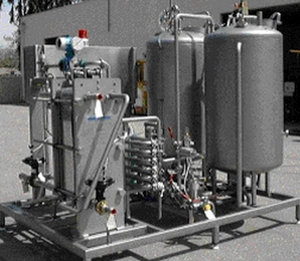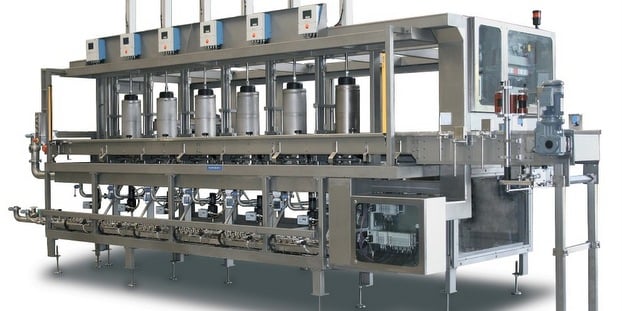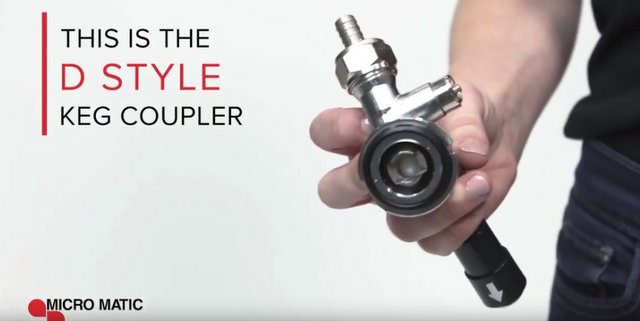After you’ve poured a piece of yourself into that batch of beer, it doesn’t make much sense to leave its fate to the keg and distribution gods. During our conversation with Jeff Gunn, president and CEO of IDD Process and Packaging, he talked about the real benefits that flash pasteurization and sterile filtering (mostly the former) have for preserving craft beer quality.

Flash pasteurization of carbonated products was developed along with and specifically for the Sankey keg system. “We knew we had a container that could be recleaned and sterilized, so it followed that if you could introduce a microbially inert product into the keg, then we had an infinite microbially stable shelf life for the product,” Gunn said.
Gunn was on the original team more than 50 years ago that developed the Sankey keg system that is used to this day, and he has spent most of his career looking at and testing the science behind this stuff.
In the brewery packaging environment, two methods of pasteurization have evolved for beer.
There’s tunnel pasteurization for cans and bottles. This is hot water immersion at ≅165º F (74º C) for cans and bottles for ≅20 to 40 pasteurization units (PUs). This is a late 19th century “comfort level” approach for brewers that is widely used today but still restricted by the physical limitations of heat transfer to and from the bottle or can, according to Gunn.
Then there’s flash pasteurization for Sankey kegs. The rapid and even temperature rise of beer to 160.7º F (71.5º C) for 20 seconds for American lagers (≅15PU) and 161.6º F (72º C) for 30 seconds for “European ales and lagers” (≅26PU). The typical heat transfer coefficient ratio of flash to tunnel pasteurization is 24:1. This is the way that virtually all keg beer is packaged and shipped great distances. However, this method is relatively new to North American brewers where glass, PET bottles and can beer is concerned.
“The world brewing industry accepted the Sankey keg and flash pasteurization from the beginning,” he said. “The U.S. was among the last to accept the Sankey keg and is only now, for the most part, realizing the benefits of using it along with flash pasteurization as originally intended. This came about because of increasing refrigeration warehousing and shipping costs, spoiled product being returned by distributors and the less than perfect results that come from many tunnel pasteurized beers in bottles and cans.”
“It is impossible to control keg cold storage once it is in the hands of the distributors,” he continued. “This is also showing up of late with exploding cans and bottles due to microbial contamination and secondary fermentation taking place as a result of the contamination.”
There are two basic flash pasteurization system control philosophies:
● The steady state philosophy. This is where flow, pressure and temperature stay constant at all times during beer pasteurization. Pasteurized water is recirculated within the system once the sterile beer tank has filled, thus maintaining a constant controlled operating state. This is Gunn’s preference.
●The variable philosophy. This is where flow, pressure and temperature are varied to maintain a controlled beer level within the sterile beer tank (SBT). As the SBT fills, the flow rate automatically slows down. The temperature and pressure balance within the system are also automatically adjusted to maintain PU and CO2 in solution balance. Conversely, as the tank empties, the flow rate increases and the system parameters revert back. The subsequent lag in the PID control loop and the restabilization of the PID control loop significantly increase the risk of over and under pasteurized beer entering the SBT and contaminating the batch.
Flash pasteurization case studies
Abita Brewing Co.
Using a 71.5ºC and 20 seconds flash pasteurization regime. Production results for bottled beer from 154 samplings were averaging <40 yeast cells/100ml., <20 lactobacilli/100ml., <20 Pediococci/100ml. prior to flash pasteurization and <1 cell/100ml. of each after flash pasteurization.
Palm Springs Brewery
Tests carried out with infected beer at 1.8 million cells/ml. prior to flash pasteurization. Using a 73(C and 20 seconds hold time (25 P.U.) yielded final cell counts of 6 aerobic cells/ml., <1 lactobacilli/ml. and <1 anaerobic/ml. after flash pasteurization. The brewery typically uses 71.5 to 72ºC and 20 seconds for their bottle and keg beer production.
Spoetzl Brewery
Used at 68º C for 20 seconds hold time (4.75 P.U.) to immobilize yeast prior to re-inoculating a new strain into bottled wheat beer. Typical cell counts are 50,000 viable yeast cells/ml., and 3 lactobacilli cells/ml. prior to flash pasteurization. After flash pasteurization the viable cell count is <1 yeast cell/ml.
Information on IDD Flash Pasteurizers:
For more information, head to the IDD manuals page or straight to the Pasteurizer manual.





Is flash pasteurization right for your craft beer? http://t.co/srdo1yh74m
RT @crsimp01: Is flash pasteurization right for your craft beer? http://t.co/gso91aJfim via @craftbrewingbiz
RT @crsimp01: Is flash pasteurization right for your craft beer? http://t.co/gso91aJfim via @craftbrewingbiz
Is flash pasteurization right for your craft beer? http://t.co/gso91aJfim via @craftbrewingbiz
My-Cam Mingus liked this on Facebook.
Beall Brewery Insurance liked this on Facebook.
RT @CraftBrewingBiz: Is flash pasteurization right for your craft beer? http://t.co/VngQ4sgdko